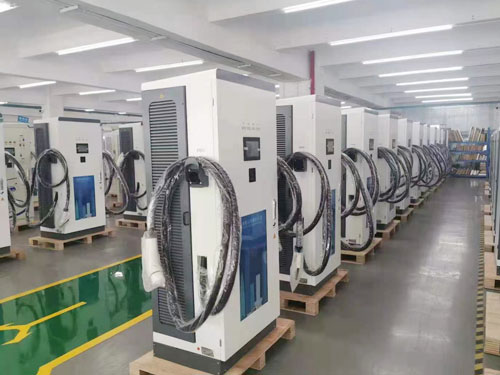-
 +86 18924678741
+86 18924678741 -
 sales@hjlcharger.com
sales@hjlcharger.com -
 Shenzhen City, Guangdong Province, China
Shenzhen City, Guangdong Province, China
What is the ev charger architecture? As a device for charging electric vehicles, ev chargers usually consist of the following parts:
1. Charging interface: The charging interface is the physical interface that connects the charger and the electric vehicle and is used to transmit power and control signals. The charging interface usually uses international standard plugs and sockets, such as the European standard Type 2 plug, the American standard SAE J1772 plug, etc.
2. Charge controller: The charge controller is a key component in the electric vehicle charger and is responsible for controlling and monitoring the charging process. It adjusts parameters such as charging current, voltage and charging time according to electric vehicles and charging needs, and monitors the status and charging process of electric vehicles in real time.
3. Charger host: The electric vehicle charger host is the core part of the charger, including charge controller, power conversion module, communication module, safety protection module, etc. The host is generally installed inside the electric vehicle charger and is responsible for controlling the charging process, managing energy measurement and billing and other functions.
4. Power supply: Electric vehicle chargers need to be connected to the power supply to supply the power required for the charging process. The power supply of electric vehicle chargers generally uses AC power, which is converted into DC power suitable for charging electric vehicles through transformer step-down, rectification, filtering and other processes.
5. Control panel: The control panel is the interface for users to interact with the electric vehicle charger, providing operation buttons, display screens, etc. Users can select the charging mode, start charging, set parameters, etc. through the control panel.
6. Communication module: The communication module is used to communicate with electric vehicles and transmit control signals, charging parameters, status information, etc. The communication method can be power line communication (PLC) or wireless communication, such as Wi-Fi, Bluetooth, etc.
7. Safety protection module: The safety protection module is used to protect the safety of chargers and electric vehicles. It integrates over-current protection, over-voltage protection, over-temperature protection, short-circuit protection and other functions, and will automatically interrupt the charging process when abnormal conditions are detected.
8. Electric energy measurement and billing module: The electric energy measurement and billing module is used to accurately measure the electric energy consumption during the charging process and settle fees according to billing standards. It usually includes energy meters, billing units and related data processing modules.
The above are the structural components of an electric vehicle charger. Electric vehicle chargers of different models and manufacturers may have some differences, but overall they include these basic components to realize the charging function of electric vehicles.

If you want to know more about "ev charger architecture", you can directly consult the electric vehicle charger manufacturer - Shenzhen Hongjiali New Energy Co., Ltd. online or by email (sales@hjlcharger.com).
A new era of charging! Hongjiali's ultra-quiet...
On March 27, the three-day 2025 American New Energ...
THE 4TH PEVS 2025 THE LEADING EV SHOW IN INDONESIA...
The power source of electric v
To purchase ev charger thailan
Analysis of investment opportunities and innovativ...
Electric vehicle charging stat
How do you charge an electric
Regarding the charging time of
EV charging unit - Suitable for retail,
For ev chargers in Ireland, look to Hong
Find and compare the best ev charger by
The 30kw charger is a 30kW output DC fas
Whenever you need us, we're here for you. --- Contact us for all your support needs, from technology, general queries to information support, etc. Our hotline numbers and e-mail are open 24hx7d for your needs.

 +86 18924678741
+86 18924678741 sales@hjlcharger.com
sales@hjlcharger.com Shenzhen City, Guangdong Province, China
Shenzhen City, Guangdong Province, China